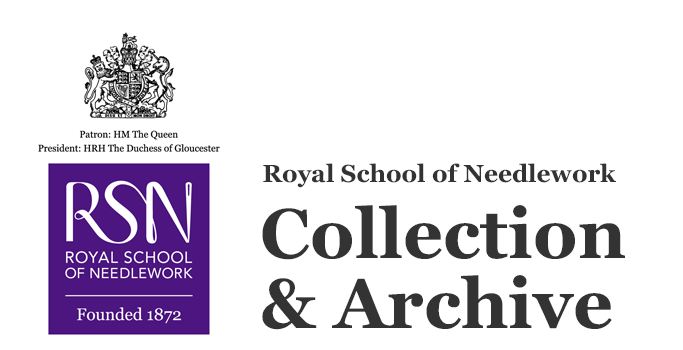Nakshe (women's trousering)
Object name
Date made
19th century
Place made
Description
19th-century nakshe, a panel used to make trousers worn by Iranian women. The panel is made of cotton with silk threads used to create a diagonally striped floral design.
Content description
Embroidered Persian panel from the 19th century, known as a nakshe. The panel is made of cotton and is completely covered in twisted silk threads worked in tent and straight stitches. It is decorated in diagonal stripes of alternating thicknesses. The thinner bands feature a geometricised floral pattern of red, brown, green, white, blue, yellow, and pink threads. The thicker bands feature two types of designs -- one is red and pink flowers (possibly roses) with small, white snowdrop-esque flowers and the other includes smaller red and pink flowers, leaves and flowers with blue, yellow, and pink threads, and small arrow shapes. The stripes are separated by dark green and navy blue chevrons.
The panel has three borders. The single short border has a repeating pattern of diagonally-oriented pink flowers with stripy blue and pink stems. The borders on the two long edges feature sections of pink and red flowers against a bright green background and sections of more muted and rounder pink flowers. A green linen border and coral silk backing were later added to the panel to turn it into a decorative item for display.
Nakshe is the word given to panels that were used to make the trousers worn by Iranian women. Like this panel, nakshe feature diagonally-oriented floral designs with alternating bands of thicker and thinner patterns. Extant panels of this sort are usually dated to the 19th century.
The panel has three borders. The single short border has a repeating pattern of diagonally-oriented pink flowers with stripy blue and pink stems. The borders on the two long edges feature sections of pink and red flowers against a bright green background and sections of more muted and rounder pink flowers. A green linen border and coral silk backing were later added to the panel to turn it into a decorative item for display.
Nakshe is the word given to panels that were used to make the trousers worn by Iranian women. Like this panel, nakshe feature diagonally-oriented floral designs with alternating bands of thicker and thinner patterns. Extant panels of this sort are usually dated to the 19th century.
Dimensions
width: 69cm
height: 56cm
height: 56cm
Materials
Stitches
Motifs
Catalogue number
RSN.98
© Royal School of Needlework

